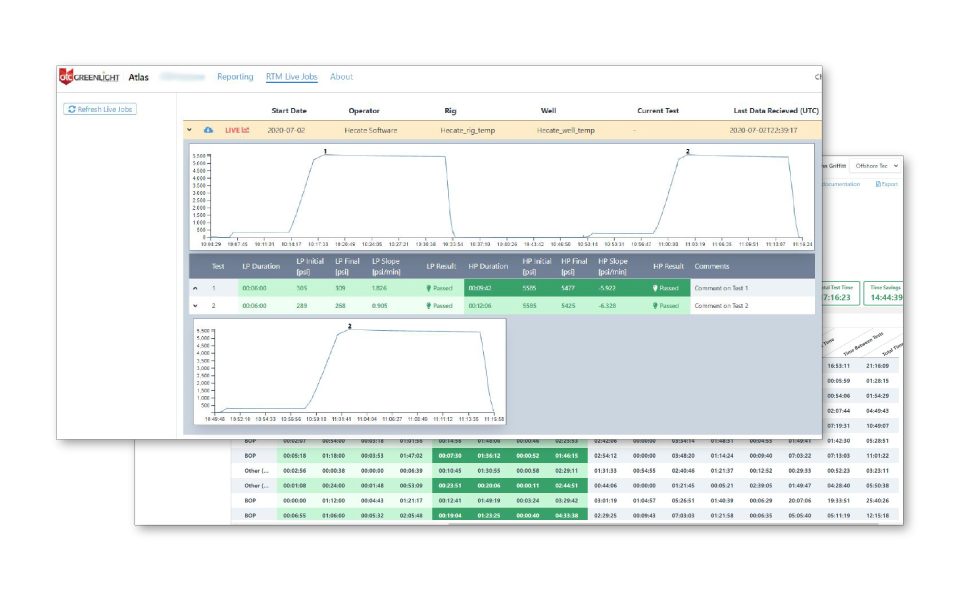- Have any questions?
- +985-727-7400
Under the Hood of GreenLight

All Things Digital – MR Deepwater Subsea LLC and Offshore Technical Compliance LLC Announce Formal Collaboration
March 18, 2022
Atlas: A World of Data to Improve Rig Performance
November 3, 2022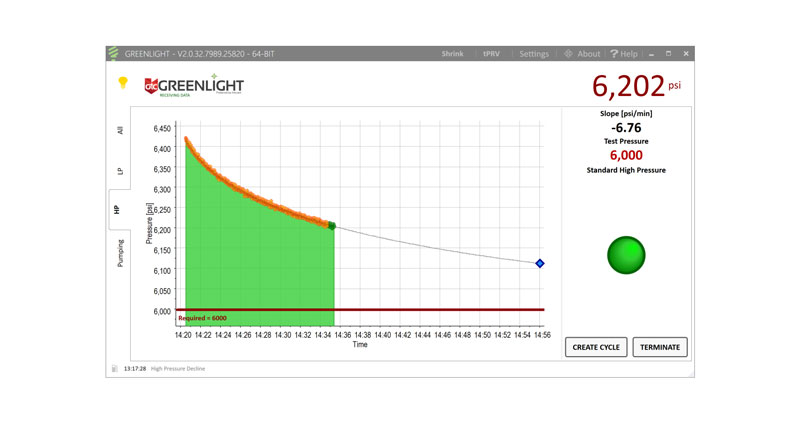
by Brian LaMarche, Ph.D. and Eric Livesay, Ph.D.
An important part of OTC Greenlight, is the ‘analyst.’ The analyst is a type of engine that takes time and pressure data inputs – typically once a second – and yields easily interpreted results of digital pressure tests in real time. Analysts are categorized as either ‘high pressure’ or ‘low pressure.’ When Greenlight runs in the Gulf of Mexico, the ‘standard’ low pressure analyst and the ‘standard’ high pressure analyst are used with configuration settings that were approved by the Bureau of Safety and Environmental Enforcement (BSEE) in 2015 (and again in 2017) for subsea BOP testing. Sometimes, an existing analyst can be configured differently for different purposes. For example, stump testing of a BOP on the deck of a drillship requires a configuration change of an existing analyst(s), not the use of different analyst. However, Greenlight was designed from day one with the capability to add completely new analysts, to better serve the demands of diverse markets and geographic regions.
The Analyst in Action
Let’s take a closer look at Greenlight running a low pressure analyst offshore. In Figure 1, each one of the plotted points is a measured pressure, and the result reported by the analyst is shown at the right of the LP (low pressure) tab. The low pressure analyst is being fed a population of measured pressure points. What is coming out is a result, either yellow for inconclusive (i.e., not yet passing or failing), green for passing or red for failing. Figure 2 shows the result is yellow. After five minutes of running, the result turned green, indicating a passing test. Unlike methods based on subjective human interpretation of results (e.g., a circle chart), the standard low pressure analyst is objective, operating the same way every time.
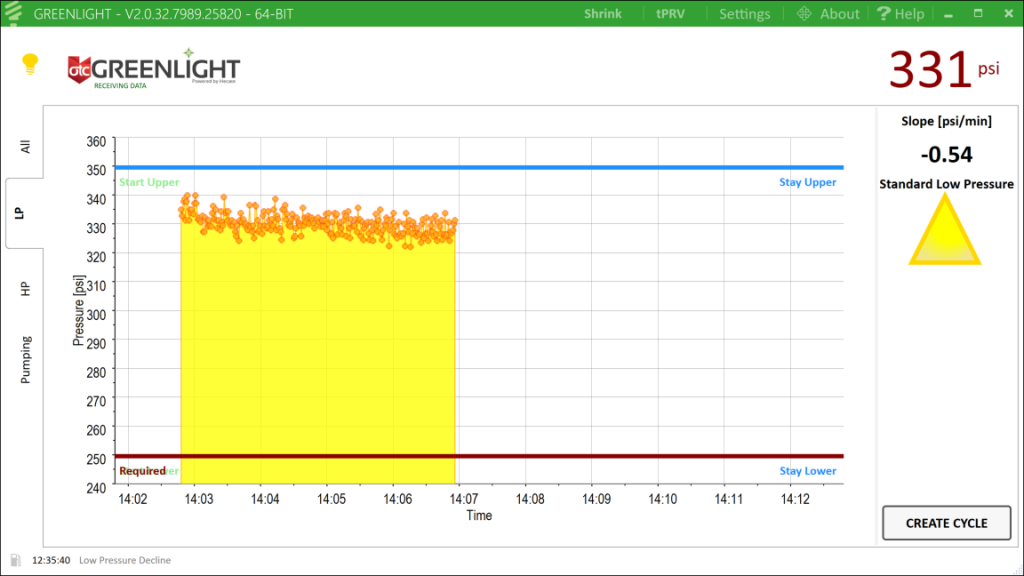
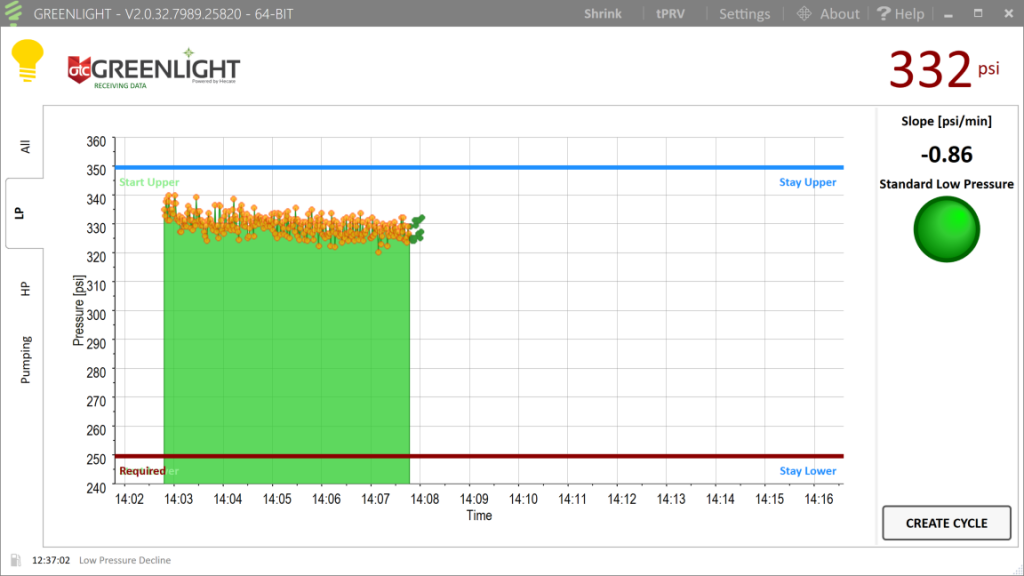
Figures 3 to 5 show the behavior of the of the ‘standard’ high pressure analyst. In Figure 3 the pressure has been pumped-up above 6000 psi and GreenLight is receiving measured pressure as it was in Figure 1, but in this case, the high pressure analyst is analyzing the data much differently than the low pressure analyst was before. The high pressure analyst is fitting the black curve to the data shown in Figure 4. The shape of that curve is being updated once a second and GreenLight is attempting to deduce if the test is going to be a passing test or not. As with the low pressure analyst, GreenLight is feeding these measured pressure points into the engine – in this case the high pressure analyst – which is outputting the result once a second. Finally, in Figure 5 the high pressure analyst is reporting a passing test.
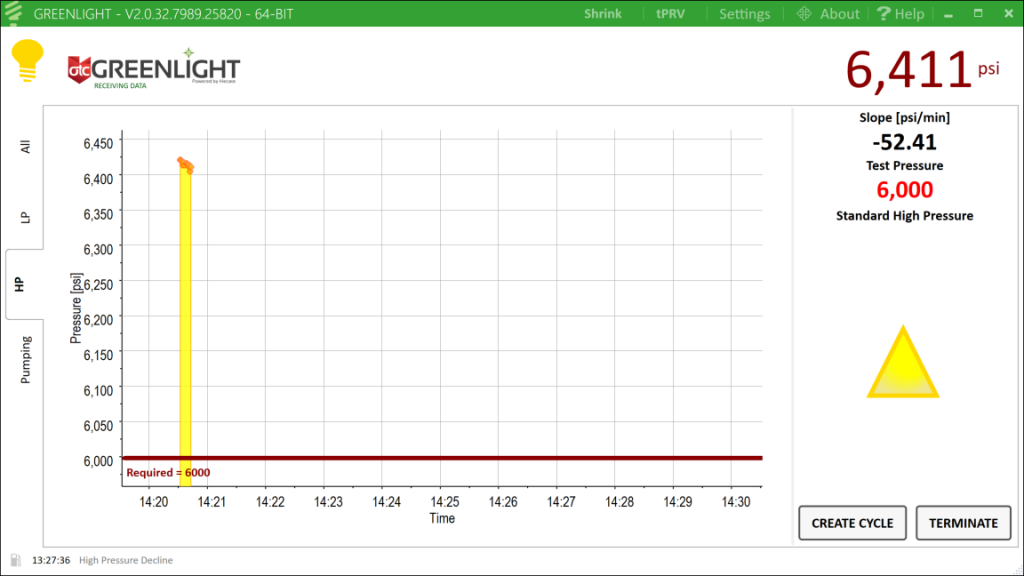
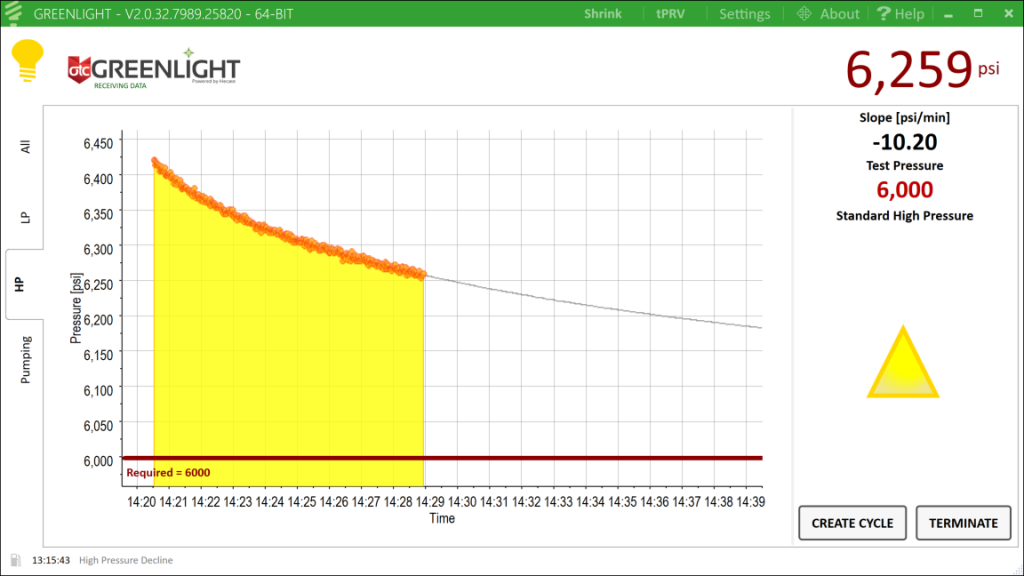
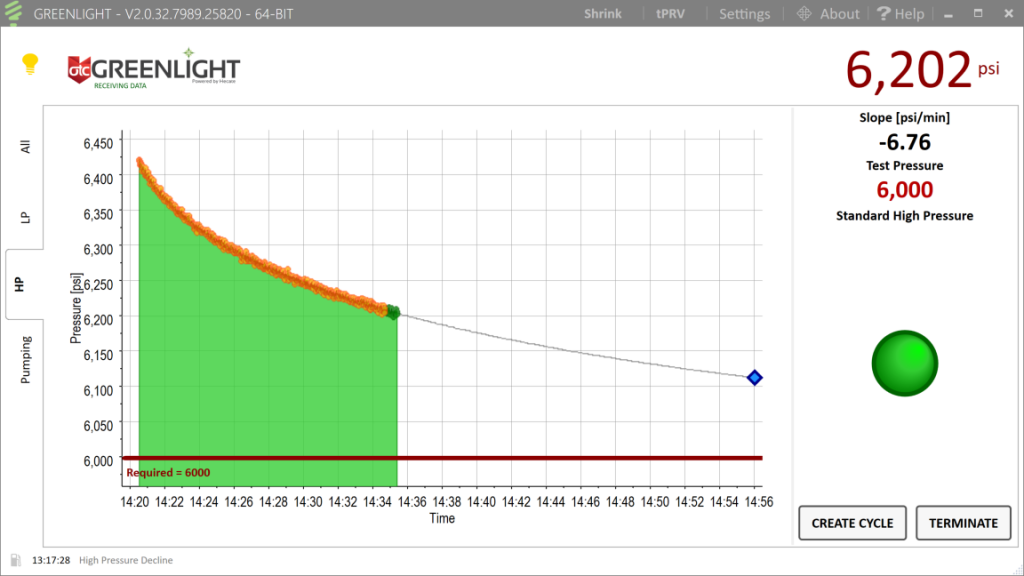
Developing and Adding New Analysts
Greenlight is inherently designed to be ‘plug and play’ with different analysts. The behavior of the integrity analyst is shown in Figure 6. Unlike the standard high pressure analyst, the criteria for an integrity test means that an integrity test can only be called a ‘passing test’ after 30 minutes of data have been acquired. Rather than try to modify the standard high pressure analyst to accommodate this, a dedicated integrity analyst was added to GreenLight. Similarly, in the North Sea a different set of criteria are used to define a subsea BOP test as passing than the criteria used in the Gulf of Mexico. There, a passing test is considered to be data that doesn’t drop more than 2% in 10 minutes. To address this different need, a new analyst was written, tested and added to GreenLight.
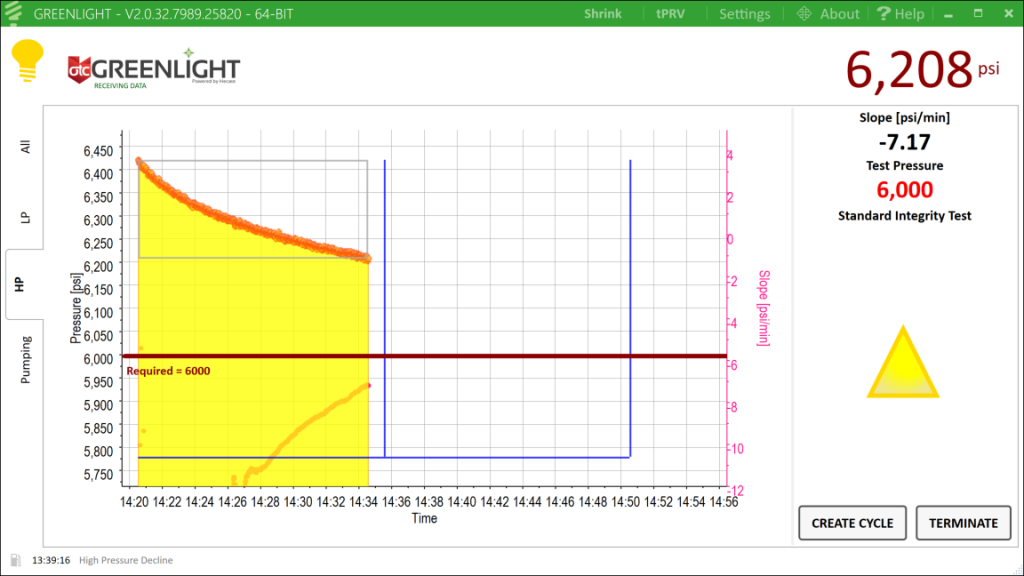
Essentially, instead of trying to cram all possible required criteria into a single analyst, we build new ones to serve different purposes. Greenlight enables us to do that.
Serving Different Markets Around the Globe
GreenLight analysts have the ability to be designed specifically for different markets with different requirements, specifications and needs. If a new customer comes along with a new requirement, we are able to adapt to their needs and provide the analysis they need to achieve regulatory compliance requirements – anywhere in the world – or to meet their own internal requirements.
The software is being deployed in many different places around the globe, but Norway is a particularly interesting area. We are extremely excited to have experienced some excellent support on a pilot study we performed recently in Norway, and look forward to continuing to grow in this region, thanks in large part to the adaptability of our analysts.

